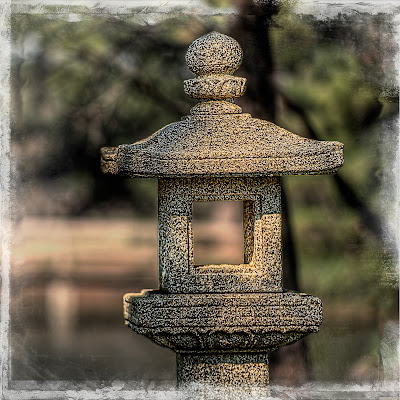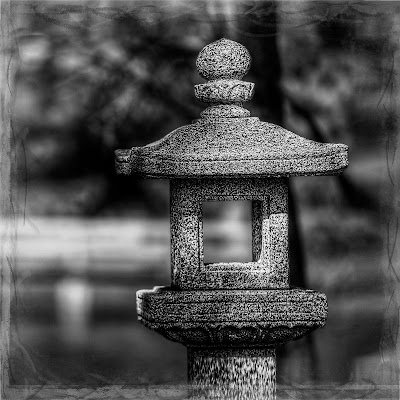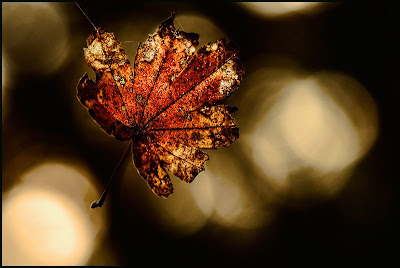

Click on photograph to see larger size. Please leave your comments. ljesp@hotmail.com





One of my friends and I went over to a local carnival on Sunday evening to try a little night shooting. I went without any plan or idea of what I wanted to get; so, for about an hour, I got nothing.
Finally, I started watching the people look at the lights. I decided that the people's reaction to the lights was what I wanted to show. I found this mother and daughter going from one ride to the next, looking at the lights and then oahing and awhing. They were having lots of fun.
This is the shot of them that I liked best.
Camera settings: Nikon D3, 28-70 f/2.8 at 28mm, shot at ISO 3,200, f/8 and 1/45 of a second.
Post Processing:
Lightroom—set black and white point and added mid-tone contrast, clarity and vibrance.
Friday, I took a portrait of a lady and her three dogs. The session started at her house in the Museum District of Houston. The dogs were just not cooperating and she was most apologetic. She told me that she normally takes them for a walk about that time over in Herman Park, which is a few blocks from her house. I suggested that we move the session over to the park. After a little running around, the dogs settled down to their normal activity at the park—her and the dogs setting on a bench watching people walk by while she read her book. I got some really good photographs of them. They seems so natural and “looked right.”
After the session ended, I wondered over to the Japanese Garden. The lighting was not too good, so I decided to zero-in on some details. I found this graffiti on the trunk of a tree. I found it interesting for some reason. I wanted the photograph to show the depth of the three trees and the lighting that was falling on them.

Camera settings: Nikon D3, 70-200 f/2.8 at 180mm, shot at ISO 200, f/5.6 and 1/125 of a second on a tripod.
Post Processing:
Lightroom—Change the white balance to a warmer color, set white and black points.
Photoshop—Created mask that had closest tree being white, middle tree being 50% grey and back tree and background being black and used the mask to saturate colors a little and add sharpening using the high pass filter method with a hard light blending mode and created a border in onOne FotoFrame.
Camera settings: Nikon D700, 28-70 f/2.8 at 28mm, shot at ISO 200, f/16 and 1/125 of a second.
Post Processing:
Lightroom—set white and black points, increased saturation of red.
Photoshop—used nik Silver Efex Pro to convert image to black and white, and increased mid-tone contrast using curves.

After many of the runners had finished, I wondered down to an area know as Alan’s Landing (where Houston started). I had seen this old building many times but had never really checked it out. While checking it out, I found these stairs.
Looking at the stairs I was not interested in the form of the stairs but rather the old, scrubby textures of the building and stairs. I knew that I wanted it to be a black and white, but I needed to bring out the texture that I was seeing. I used an ole Barry Armer's trick—hand-held HDR. I took seven shots with the exposures being +3EV to -3EV. The seven exposures were processed with Photomatix Pro.
Camera settings: Nikon D700, 28-70 f/2.8 at 28mm, shot at ISO 200, f/16 and 1/8, 1/15, 1/30, 1/60, 1/125, 1/250 and 1/500 of a second for the seven exposures with the camera resting.
Post Processing:
Photomatrix Pro—processed the seven exposures with minimum processing during the tone mapping.
Photoshop—sharpened image using high pass filter in hard light blending mode and converted image to black and white using nik Silver Efex Pro.
I was out scouting for a good place to shoot my abstract runner when I found this location. I wanted to use a traditional landscape technique of making something in the foreground very prominent and in-focus. The sun had not risen, so the sky was that deep blue that you normally see that time of the day.
The building in the background was what I really wanted to be showing in my abstract runner, but I could not find any place where the runners were passing with this background.

Camera settings: Nikon D700, 28-70 f/2.8 at 28mm, shot at ISO 1,600, f/11 and 1 second with the camera resting on a park bench.
Post Processing:
Lightroom—set white and black point, and added mid-tone contrast, added clarity and vibrance.
Photoshop—sharpened foreground using high pass filter on hard light blending mode.

When you attend an event like the Houston Marathon, you must realize that there are some things that you will not have control over. An example: BIG HAIR. Now, I am a Texas; I love Texas ladies; and, I like their BIG HAIR. But, even big hair has it’s place. Here I am having a little trouble with getting my shot around another viewer of the race. Realize that you will be faced with situations like this and just deal with it.

Amy is 3½ years old. She is a true artist. She is the photographer that I aspire to be. Here, she is photographing her mother and aunt. She is constantly directing them—“a little closer”, “bigger smiles”, "keep your eyes open”, etc. After each shot, she looks at the back of her camera to see what she has. No fretting over camera setting, just total concentration on the results, and then the barking of new instructions to her models. I did not see any of her images, but I bet her images captured the moment better than most of mine.
Finally, here is another attempt I made at capturing my abstract runners. Enjoy.

So, why did I go to the Houston Marathon with my cameras in hand? Well, I had an idea--I know this is risky for me! I was over at a friend’s house a few weeks ago and I started looking at a couple of his Leroy Neiman paintings. I really like the way the painter had abstracted the athlete and since I have decided to try more abstracts in 2009, I thought that would try abstracting some runners at the Houston Marathon.
My idea was to place my camera at street level, use a wide lens and a slow shutter speed. I thought that I would get blurred runners and a sharp background (the buildings of the Houston skyline). I did not get exactly what I thought, but I though a couple of them were interesting. Here is one of my abstract runners. Hope you enjoy.
Camera settings: Nikon D700, 28-70 f/2.8 at 28mm, shot at ISO 1,600, f/8 and 1.5 a second with the camera resting on the street.
Post Processing: Lightroom—set white and black point, and added mid-tone contrast, added clarity and vibrance, increased saturation of reds, yellows and blues, cropped the photo to be a more panoramic crop





I was over at one of the local parks the other day to scout for possible portrait locations when I spotted this little guy. He was determined to get himself a Pepsi. He kept pulling on the side of the vending machine, but, alas, NOTHING.
I like this one the best because you can see most of his face. After his dad picked him up to go, he conked-out. The little guy was tired. Come to think of it, I was a little tired just watching him.
Camera settings: Nikon D3, 70-200mm f/2.8 at 200mm, shot at ISO 200, f/2.8 and 1/500 of a second
Post Processing: Lightroom—set white and black point, and added mid-tone contrast, added clarity and cloned-out a few dust spots on my sensor (time to clean it!).

Bet you cannot understand why I took this photograph?
Let’s see striking red leaf suspended by a spider web against a nice blue background. Nope, I just don’t see it.
Yesterday, I was out walking in the woods looking for something interesting to photograph when I stumbled (yes, stumbled is the correct word here) into some leaves that were held above the ground by spider webs. There must have been at least twenty of them. I started studying the pros and cons of each leaf and finally settled on this one.
The actual shot was very difficult one to obtain: point camera at leaf and push shutter. The leaf is a very small, thus my macro lens was only about six inches from it. Everything in the photograph is pretty much as I saw it.
Camera settings: Nikon D3, 105mm Macro f/2.8, shot at ISO 200, f/25 and 1/20 of a second on a tripod
Post Processing: Lightroom—set white and black point, and added mid-tone contrast, added clarity and vibrance.

No, Tin Man is not a rock ‘n roll or country or blues singer. At least, not professionally. I was really disappointed with you out there (assuming that any of you are really out there), because I did not get too many guesses as to what Tin Man is noted for.
Tin Man loves his Harley, his beer, his ice house, his dancing and his occasional singing with the band. But, what Tin Man is most known for is his work for and with homes for battered women in the Pearland area. I was told that he is one of the chief organizers for a couple of fund raisers for homes for battered women and regularly donates his time to help maintain the homes.
Although he will not talk, at all, about himself or any work that he does, he is a lot of fun to be around; and, a pretty good singer to boot!
This photo was taken at Scooter's Ice House in Pearland during a wrap-up party for one of the fund raisers. As you can see, these folks know how to raise more than money!
Camera settings: Nikon D3, 70-200 f/2.8 at 100mm, shot at ISO 800, f/5.6 and 1/125 of a second.
Post Processing:
Lightroom—set white and black point, and added mid-tone contrast, added clarity.
Photoshop—converted to black and white using nik Silver Efex Pro.
Camera settings: Nikon D3, 70-200 f/2.8 at 200mm, shot at ISO 200, f/8 and 1/15 of a second on a tripod.
Post Processing:
Lightroom—set white and black point, and added mid-tone contrast, added clarity and vibrance.
Photoshop—combined the two layers and added a curve to darken the water and hue saturation layer to de-saturate the colors, sharpened the spillway layer and added some mid-tone contrast

Why is today “Abstract Wednesday”? Because today is Wednesday and I am presenting an abstract photograph today.
Reason enough for me.
This photograph is a nine multiple-exposure shot. With many of the Nikon, you can select multiple exposures in the menu, dial the number of exposures you want and select exposure compensation and start firing. All your exposures are then recorded on a single image. I usually set my shutter release to high-speed release because I want the exposures to be in a rapid burst. I also change my focus to manual mode (I do not want the camera to be searching between exposures). The multiple exposure mode allows you to create some unusual effects in camera without a lot of technical knowledge.

In this photograph, I set one of focus points over a particular flower and rotated the camera around that point. I wanted to capture the colors and also create a feel of movement. Even though you get a feeling of color and movement, if you look closely at some of the flowers you can see a lot of their details.
Camera settings: Nikon D3, 70-200 f/2.8 at 120mm, shot at ISO 200, f/8 and 1/30 of a second
Post Processing: Lightroom—set white and black point, and added mid-tone contrast, added clarity and vibrance, increased saturation of greens, blues and magentas.